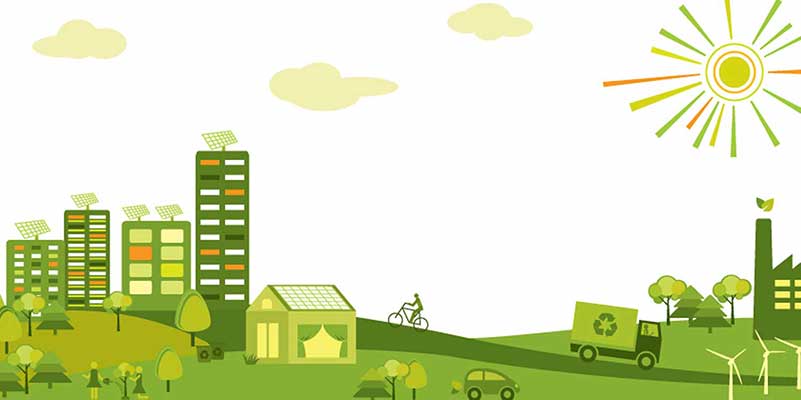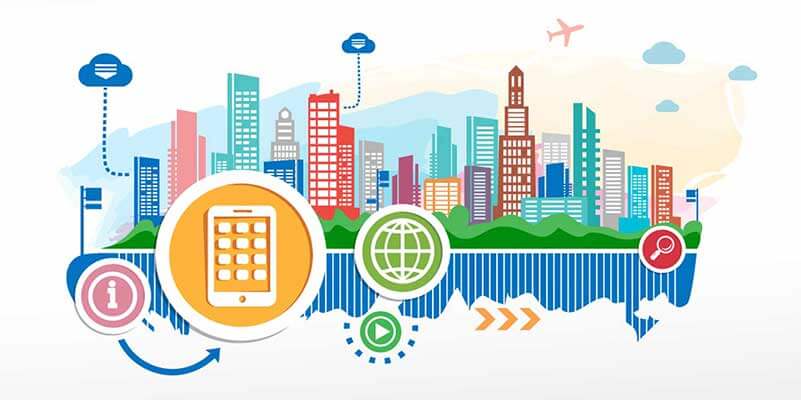Have you ever considered how many hours are wasted, travelling to work and back every day? Now picture a scenario where you can work while you are being driven to your destination along the fastest and safest routes – without it costing you anything extra? Wouldn’t that be great? Brace yourself – cities are about to change forever. And it’s already happening in the backyards of tech and automobile giants like Google, Audi and Mercedes where driverless cars or self-driven automotive technology is being developed and fine-tuned. These cars may not yet be a regular sighting in everyday traffic but back in the days of the T-Ford, neither were those primitive cars. Technology always goes through a complex process of launch, acceptance and diffusion before becoming cheap and accessible to the public and then it brings about radical change in the way people and cities function. Imagine smart, driverless cars connected to smart traffic signals via the cloud. The communication between them regarding routing, traffic relays and commuting in general could instantly lead to more efficient travelling and traffic management.
Where do futuristic cities and driverless cars actually intersect?
Just think about it for a moment. The car which you drive right now may already be connected to the cloud and global data banks via your navigation software. Cars with internet and Wi-Fi capabilities are already making their way onto international markets. This is where it begins. Once companies like Google perfect their design and driverless cars become more commonplace, situations in which you are being driven to work while doing important things such as managing budgets, typing up reports, attending to client calls or reading the morning paper, will become the norm. The less dependent cities become on human intervention, the more they will change.
The next 20 years will be more disruptive than the last hundred: we will witness full-scale automation.
The introduction of smart technologies such as, for instance, GPS, infrared scanning, radars and High Definition cameras has propelled companies to venture deeper into the space of selfless driving. Examples and successful trials are springing up everywhere. Google Cars have already registered over 700,000 miles. The autonomous Audi A7 drove 569 miles from San Francisco to the CES show in Las Vegas this year. Volvo has launched a new scheme where they select 100 new owners of their autonomous XC90 models and let them drive 50 kilometres around Gothenburg.
Video credits: CARJAM TV
What I mean is, every automobile and tech giant is realising the potential of autonomous driving and no cost is being spared to turn out successful autonomous models which can be used on a large scale. Of course there are issues which provide real roadblocks to the recovery of the car manufacturing sector. For instance, the regulations controlled by the government and authorities are difficult to bend and may take years to be revised. But autonomous vehicles can bring about a change within the city authorities, which can result in the delivery of policies around increasing the efficiency of the city’s residents, enabling the development of dynamically-run cities.
Driverless cars will make driving a lot safer
Statistically, motor vehicle accidents are the eighth biggest cause of human deaths globally. 90%-95% of all car accidents are caused by human error. The costs associated with these accidents reached a whopping $227 billion in 2013. But over the years, technologies like front crash prevention systems have warned drivers of an impending obstacle and advised them to reduce speed or stop. Such technologies are now also being implemented to enable cars to self-park, choose safe spots and more. Mercedes Benz introduced an autonomous steering system which is operational under certain situations on the highway. Considering the fact that highways are one the most accident-prone zones, technologies like these will be invaluable. Google has already made announcements that their integrated selfless driving system will be marketable by 2017.
The reason this market is exceedingly optimistic is because the scope for improvement in safety and productivity with driverless cars is far greater than with traditional vehicles. Once such technologies become more commonplace, we will see a much more efficient urban population as the problems resulting from accidents and lack of road safety will decrease. Safer cities will mean more urban population and smarter cities will mean efficient management of this population. As more and more metropolitan cities embrace robot cars, we will see a radical change in the way these cities. Over-burdening of public transport will cease to exist as cheaper shared rides will become accessible to many.
A golden opportunity for sustainable business while benefitting the environment
The autonomous car market has the potential to significantly reduce the number of cars on the streets. Today, 80% of cars only have one driver and the costs associated with private transportation can easily amount to 18% of their annual income. The unhealthy part is that this 18% is utilised by an asset which in turn is used only 5% of the time. Peer to peer car sharing services like Buzzcar and Zipcar aim at reducing all these percentages and associated costs by using modern smart technology and providing efficient transportation solutions to the public. Imagine cities with reduced car densities and space freeing up for gardens, lawns and playgrounds! The opportunities for business owners are excellent, too! Boston based Lux Research estimates that the value of opportunities which autonomous cars will provide to car manufacturers may be as high as $87 billion by 2030. We might be looking at a future with greener urban areas, revitalised and clean suburbs and an efficient transportation ecosystem which takes care of itself.

What are the immediate effects of autonomous automobiles on cities?
One can safely assume that these self-driven cars and their technologies will affect the public transportation systems and also impact the amount of driving people do. If you remember the movie Minority Report with Tom Cruise, you will have a pretty good idea of what our future cities may look like.
It won’t be long until autonomous driving is part of our day to day lives. The thought does however raise some concerns as well. Who will handle these cars, which policies will be in place and with all this connectedness and information flowing freely, how do we decide who will have access to it?
Disruptive technologies will force traditional norms to change
These new forms of transport coupled with smart technologies and intelligent, more efficient models are forcing people to adapt. For instance, the car sharing options provided by Zipcar persuade people to take part in public transport and activities like walking and biking besides providing them access to cars on demand. Increased car sharing practices can significantly reduce private vehicle ownership in individual households. Smart technologies have allowed the French company BlaBlaCar to provide simple paid ride-sharing where people can split the costs of long distance trips. The fact that such applications are becoming increasingly popular can be seen from the 10 million global users of BlaBlaCar. Implementation of Zipcar required a change in Massachusetts’ car rental laws. Another example is the services provided by Uber which require public entities to define its operations differently compared to traditional taxis. This allows Uber’s independently contracted drivers to avoid full insurance and also reduces the power of the public sector to put a limit on the total number of drivers. This in turn assures better pay for the driver, stable fares for the passengers and more opportunities.
These companies are also regularly experimenting with smart technologies to offer even more niche shared services like carpooling. UberPool and Lyft Line are allowing people to share rides and costs with one driver. This has even gained popularity as 20% of Uber rides in San Francisco are shared. The congestion, suffered by many developed and developing urban metropolitan cities around the world, like Mumbai, will be relieved once these practices become more commonplace. As you can see, smart cars offer comprehensive solutions, allowing large urban areas and over-burdened roads to become more spacious, more efficient and offer a higher and more stable standard of living!
Parking problems getting you down? Leave it to your robot car
Smart cars will rid cities of parking problems. Have you heard about AutoPlatz? It is a project undertaken by an expert team in Germany. They are working on developing self-driving cars that can find their own parking, even in multi-storey car parks! This project will be put to the test later this year in October where their robot car prototype will make an attempt to park itself on the sixth floor of a car park facility in Stuttgart. This research from the FZI automotive lab, Karlsruhe, is one among many taking place globally, aiming at resolving the pressing issue of parking space. The smart parking system employs local sensors and cloud data to help the vehicle manoeuvre around parking lots which will also be equipped with compatible technology. Experts say that GPS technology coupled with smart technology such as the one used by FZI could easily allow entire car park facilities to support driverless cars and make parking an operation without any human involvement. Imagine that? With smart parking in the works, our parking problems will soon be a thing of the past.
Still paying for cabs? Introducing Google Free Rides!
There are rumours that Google is considering launching an app service called Free Ride where users can order a self-driving Google car. Imagine a robot-operated cab that takes you wherever you want without you having to pay a cent! Seems too good to be true, right? Well, it’s coming, and considering Google’s prime business model of advertising, none of this really comes as a surprise. Such taxi services and other shared transportation models may turn out to be beneficial for the earth and cities in general. Research done by scientists from the Lawrence Berkeley National Laboratory in California has provided optimistic results regarding self-driving cars and related services. The research suggests that the use of autonomous taxis could result in significant reduction in greenhouse gas emissions by reducing the aggregate amounts of energy used per mile. Despite the initial high production and launch costs, implementing the use of autonomous taxis will also yield cost reductions, which is also important as the cost of taxi rides is high across all major cities in the world.
The threat of cybercrime now extends to cars as they become autonomous and connected via the cloud
Data Security is one of the biggest concerns resulting from the rapid development of autonomous cars. Companies and firms are increasingly taking added measures to step up their cyber security and protect their customers. With the increasing diffusion of smart technology into elements like shopping, online banking and IT in general, the danger of your information being hacked has never been more real. Data leaks can have very serious consequences, among which physical injuries.

Are car manufacturers doing anything to prevent cyber-attacks?
In order to retain customers, gain and retain market share and protect their own interests, companies only implement these technologies once they have proven to be completely secure. General Motors, for instance, promoted Jeffrey Massimilla as a cyber-security chief. I believe that the government authorities and the industry should work together to make automobile data security a reality. We are looking at a future of smart cities that will protect all their smart elements including autonomous cars with technologically advanced firewalls, cyber-threat counter-measures and policies which take care of the privacy and data rights of each citizen.
Wider sidewalks, more gardens and playgrounds: autonomous cars transform cities
The way cities are designed today obviously accommodates the extent and scale of transportation in the region. With autonomous cars running fully implemented, the appearance of traditional cities will change. In fact, the change will be so significant that they will start resembling the smart cities in movies like Minority Report. With autonomous parking, land can be freed up for parks, public spaces and other real estate. Autonomous cars will lead to automated traffic management, decreasing the likelihood of traffic accidents happening. Parking fines, traffic violations and other traffic related irritations may soon become a thing of the past!

Cities will also save on fuel as the number of cars will be greatly reduced and autonomous ones will be designed to run consistently and economically. Moreover, technologies like solar power and green energy from, among others, Elon Musk (Tesla) will enable even greater savings on our own perishable natural resources. Imagine roads embedded with energy-generating solar cells, charging our driverless cars on the go! Plus the accessibility and flexibility of these cars will be huge as a greater variation of population groups, including, for instance, disabled people, will have reliable and safe transportation options at their disposal. Thus, the overall benefits to city design and demography will be significant. Rudimentary problems like drunken driving or road rage exist because of personal driving. These problems immediately cease to exist with autonomous cars which make for precise and logical decisions perfected by our own hands, working towards our own safety.
Thus, the city design transforms into a well-managed, green infrastructure where efficiency is the benchmark across city-wide operations that are connected by smart technologies and provide more freedom and accessibility to the residents. Sounds amazing, doesn’t it?
Conclusion
Imagine developed cities with a reduced density of cars. The future with autonomous cars looks green, efficient and sustainable. Symbols of status, prosperity and development have held the same meaning over human history but changed forms from time to time. There was a time where owning a horse and a farm meant prosperity. Then came the cars where vehicles like the Rolls Royce became symbols of wealth and status. In the future, driverless cars will mean a better more prosperous life. Traffic will be flowing freely and safely. Cyclists and pedestrians will experience open, safe roads and there will be more open space for recreational purposes. You will never get hit again by a drunk driver or a careless teenager. You will never have to find parking space again. Cars will be available on the go and sometimes even for free (if the Google Car rumours turn out to be true!) As parking problems are eliminated, sidewalks will double in size. The picture which autonomous driving and driverless cars projects is a very rosy one but, one must realise that there are numerous roadblocks which need to be removed in order to realise all these benefits. Regulations regarding data security and treatment of this technology must be robust and focus on the safety and security of the end user. Companies must make sure that their designs are perfect and not vulnerable to hacking or malfunctions. The element of trust between man and machine has always been a matter a speculation but with modern technology diluting the boundaries, a more efficient automotive future is definitely on the horizon.
Share via:


